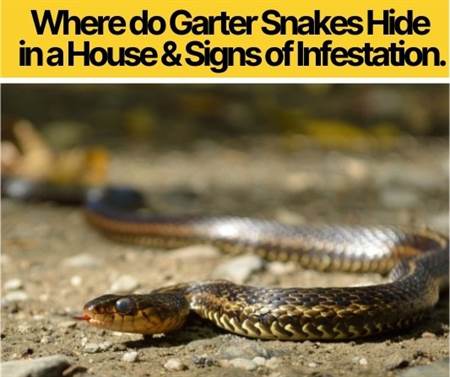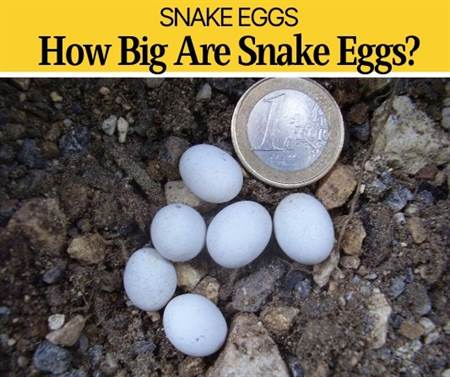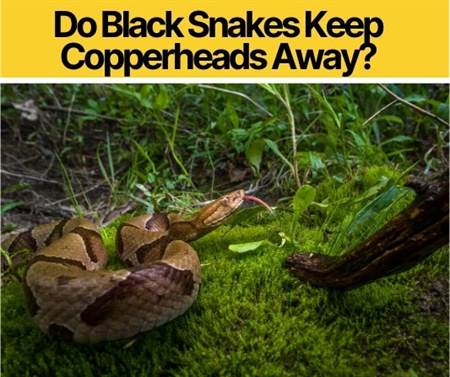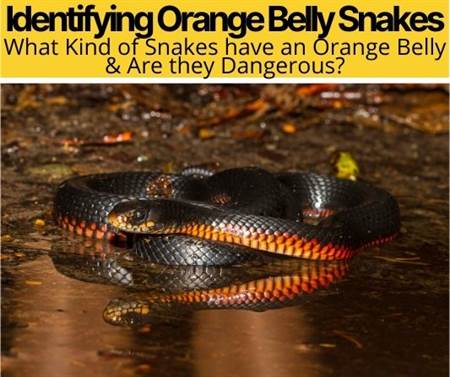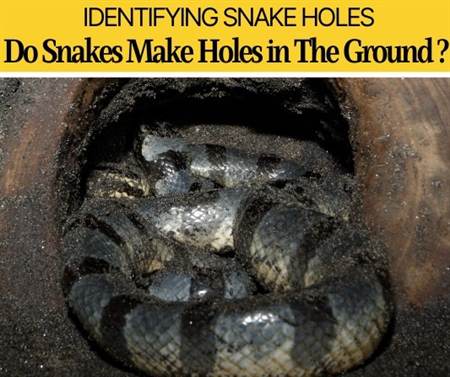 Snakes are one of the world’s most feared creatures which are known to Often hide in Holes specially in winter when they want to try to find a warm place to hibernate.
Snakes are one of the world’s most feared creatures which are known to Often hide in Holes specially in winter when they want to try to find a warm place to hibernate.
However do Actually snakes dig holes in the ground themselves?
If so How are they able to dig them and how can you identify one?
In This article we will see the hole digging abilities of various snake species ,why are they even living in holes and what you should do about them.
Do Snakes Dig Holes In The Ground?
Some snakes do dig and Make holes in the ground and some don’t, it mainly depends if they spend most of their time underground or over ground in the wild. Snakes such as Garter Snakes and Rat snakes Can dig holes in ground fairly well, Rat snakes not only dig holes to live in them but also to hunt. The holes in which most snakes live in permanently, are those made by turtles or frogs.
They can also hide in tree hollows, under bark, rocks and sometimes under leaf litter. Snakes can tunnel through loose soft soil and through leaf litter. The black-headed Pythons in Australia are a main example, as the sand is incredibly soft allowing the snake to hide itself.
However, most snakes can’t dig through hard ground and most cannot create themselves a burrow as such as most are not good diggers. Most try with softer ground; however, this is more for a temporary measure.
Snakes like to feel safe and secure, therefore holes dug by turtles is perfect for those wanting a more permanent solution, since they can feel their whole body, back mainly, touch the ceiling and other surfaces of the hole.
Read more: Animals that Dig Holes in Yard
Do Snakes Live In Holes In The Ground?
Yes. Most during hibernation, as they are cold blooded creatures therefore during colder months, they need the warmth and protection. After hibernation, they will reside mostly outside only finding shelter during the night or if it is cold.
Snakes can live anywhere, from forests to urbanized cities. Some snakes reside under the ground all year round (even in active seasons), and only go outside for food and for warmth.
A snake will find a hole decently sized. From inside a tree to underground. If another species is living in there, the snake will most likely eat it. You know if a snake lives in a hole if you see outside there is no spider webs or if the hole looks a bit bigger and you can see a bit of residue from light burrowing.
Do Common Species Usually Dig Holes?
Rat snakes and garden garter snakes are the most common species you will find in countries like the USA, UK and most parts of Europe. These snakes are usually not harmful at all to humans. Rat snakes tend to dig holes more since they tend to be particularly good diggers.
People who keep rat snakes as a pet, have reported that they must be careful when they do go outside as they sometimes will immediately try to start digging burrows.
This is again the same with garter snakes (commonly known as the garden snake). These are commonly kept as pets around the world. These like to be near water mainly or in grassy areas or forests. They are generally active during the day, mainly when it is warm. During the night or cold times, they will dig holes for shelter. This is a common practice during hibernation.
Also read: Signs of Garter Snake Infestation
What Should I Do About Snake Holes
The best thing to do is to leave it alone. Many people have tried to cover it with more soil, leaves etc but this will only allow the snake to burrow even more. Placing items like plant pots or heavy items will not work either, since the snake will find another way to escape.
If you try yourself to sort out the hole, you will most likely encounter the snake- and it will feel threatened! You might even injure yourself during the process.
The best way to sort snake holes is to prevent them or if they do happen to call in professionals. To prevent it, cover up all areas around the house in which a snake would hide in. Also, clean up any debris, litter vegetation etc from grassy areas and remember to not let trees, grass, bushes or shrubs become overgrown.
Also use snake repellent (you can purchase from a local store) or use things such as clove and cinnamon. A snake will not come anywhere near your house if there are any smells which repel it.
If you do feel confident in removing the snake by yourself, always use strong gloves. In the USA there are only four venomous snake species (100 in Australia!), and most snakes do have a nasty bite! Do not try shoot the snake as you could threaten it and it will attack if necessary!
Check local state laws on snake removal and what to do, as some prohibit clubbing or shooting snakes. Do not use fumigants in a snake removal, as that is illegal in the USA.
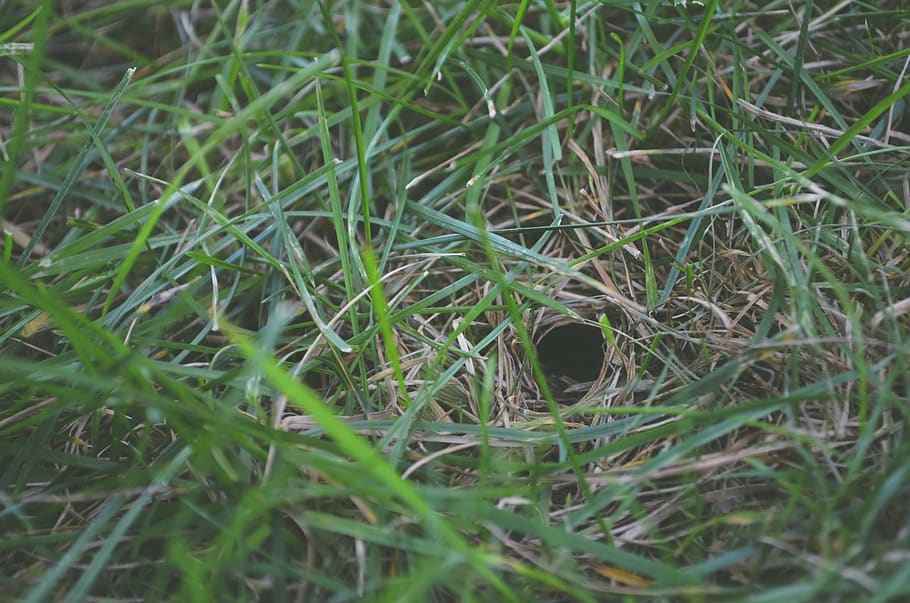
How Can I Identify Snake Holes in Yard? What does a Snake Hole Look like?
The easiest way to identify a snake hole, is to see the snake emerge from the hole. Then you can find out whether it is permanent or temporary. If you can’t do that (it may be hibernation season or you may be too busy), then have a look at the hole itself.
Look for a lack of cobwebs or debris at the entrance. Furthermore, if it was once a hole for rodents (mice, chipmunks, moles etc) and they no longer inhabit there- investigate. Now be careful during this part as you may encounter the snake.
To investigate, you can set up cameras around the hole to see what is going on, or you can use snake repellent around the entrance, however this could cause an interaction with the snake. If you are concerned, get a professional to check it out.
Why Do Snakes Live In The Ground
Mainly for warmth and protection. Not all snakes are huge killers, some are prey to other predators therefore a hole protects them. Underground, acts as warmth and good protection- and is more a long-term response (e.g. hibernation).
Some snakes, such as rat snakes, may live most of their lives underground only coming up for sunlight and food. This tends to happen more in jungles and forests- less so in urban areas since snake’s fear humans.
Sometimes, a snake may live in a small hole in a tree, wall, debris etc for temporary living. This is common with snakes who mostly spend their lives living outside- and only need shelter for nightfall or cold periods. A good example of this is the sea snake, which tends to reside around coasts in Asia and Africa.
Also Read: How Do Snakes Get In Toilets
Different Snakes that burrow underground And make holes
Let’s see which of the most common Snakes are able to Dig Holes , why they dig holes and what kind of holes are they able to dig.
Black Snakes
The black snake (known as the black rat snake or pantheras obsoletus) is the largest of rat snake species. Although Black snakes are not dangerous, they will bite if they feel threatened. These snakes do tend to reside in holes and dark areas. The reason why, is that there tends to be more rats and prey in which they can eat.
Pet black snakes will tend to dig holes within their environment. These snakes are very well known to be good hole diggers and can easily make permanent solutions. These snakes also like to hide from other snakes and predators therefore going underground will protect them.
Garter (Garden) Snakes
Garter snakes, (commonly known as Garden snakes) are one of the least aggressive species of snakes. Known for being in urban areas, they have been a common sight for some people living within the countryside. They can enter homes and hide within large cracks and holes. These snakes mainly spend a lot of time outside, and only dig burrows and holes for the night, hibernation and when the climate is cold.
These snakes are usually the ones you will encounter on within your home. These tend to be very harmless and will only attack if threatened.
Rattlesnakes
No. They tend to dig light burrows and tunnels, but never deep proper holes. There are 36 species of rattlesnakes, and each of them needs protection from a shelter of some sort. This can be to protect it from predators and extreme temperatures. Rattle snakes can be extremely dangerous animals and can kill you. They mostly reside in hotter dry conditions such as deserts (e.g. Death Valley).
These snakes do hibernate, therefore part of the year they need to find shelter. They usually hide in deep cracks to gain warmth. However, rattle snakes do find it quite hard to find areas to stay in. Therefore, some may live communally- sometimes in groups of 100!
Copperheads
The famous bronze-hued head snake does dig holes! Copperhead is a common venomous snake which is seen more in more southern states of America. They love to hide in rotten wood and leaf piles rather than holes. It protects them and allows them to sneak up on prey. Some of these snakes do like to hide in more wooded areas and forests.
These snakes should be left alone if seen. Like vipers, these snakes are serious. They can seriously injure you and in some cases kill you.
Water Snakes
Water snakes are non-venomous snakes usually found by the water in North America. They are quite large and prey on small to medium sized animals such as large rats. They are sometimes mistaken as water moccasins unlike them, they do not have heat sensitive facial pits. Northern Water snakes tend to be the most common.
These snakes tend to dig themselves within sand or hide in cracks rather than create large holes. These snakes are a lot larger than normal snakes therefore they need more room to cover themselves. They tend to be quite aggressive and bite when handles, so be careful when dealing with these snakes! They do like to hide within cracks of trees or rest on branches on top of the water. In some cases, they can hide in holes in the water as well.
Rat Snakes
Yes. One of the most common types of snakes sure does dig holes in the ground! They dig holes not only to protect themselves, but also to catch prey. These snakes are exceptionally good at creating holes, and pet owners of this snake have reported how they do like to dig holes within their habitats and outside.
Some of these snakes, also spend most of their life underground. This is so they can feel secure and keep warm. They can go out during the day and hunt for food, however there is a lot of prey they can catch whilst underground.
Related Questions
Chipmunk Holes vs Snake Holes. How do you tell them apart
Chipmunks can be a nuisance. They can also be a snake’s dinner! Chipmunk holes tend to be 2 inches wide, and a snake hole is just a bit bigger. The way to tell them apart is through mainly activity. Faeces, if there are more snake faeces about then there is a snake.
You will usually find faeces outside the hole, and snake ones have a noticeable look and smell to them. Chipmunk faeces do not smell as bad or are the same shape.
Furthermore, if you place chipmunk food outside a hole and see it gone- then the likely theory is there is a chipmunk. However, if it still is there a week after, you may want to start investigating. Snake holes and Chipmunk holes can be similar since snakes kill rodents such as chipmunks and steal their habitats.
Mole Holes vs Snake Holes. How do you tell them apart
Again, this can sometimes be hard. A snake will eat a mole and steal its habitat; however, a mole is bigger in size. The hole for a snake may be smaller since it does not need one so big. There will be less debris and cobwebs at the entrance, since the snake will clean it more. Furthermore, the faeces from a mole is far different to that of a snake. This is usually found outside the hole.
Furthermore, moles tend to have a different smell. Their smell can be lot more ferocious than a snake’s smell. A snake will only emit smells if it feels attacked and to repel other predators.
Crawfish Holes vs Snake Holes. How do you tell them apart
Crawfish holes tend to be 2 to 3 feet deep. The reason why is so that they can get water deep below. Crawfish holes have a weird cone like shape and are easily recognisable. A snake would sometimes go in there only as a last resort- mainly as sometimes it can be too wet and cold. The crawfish then is like any other rodent- a snake will just eat it.
Snake holes tend to be less cone shaped and more basic. The entrance will be like any other hole, so it will not be that obvious. Crawfish holes can be very narrow and hard, and sometimes the snake can get stuck in them.
In Conclusion
Most snakes only dig light shallow holes. Deeper holes is more of a challenge as the land can become harder, therefore to get those 2 to 3 feet down holes which some of them need, they must eat rodents living in there and steal their habitat. Snakes such as the rat snakes are good diggers, mainly for hunting and protection.
Some snakes do spend a lot of their lives underground (black snakes for example), and only come up for hunting and warmth. These snakes tend to live in deeper more permanent conditions. They are much more protected in the ground than they would be out in the open.
Other snakes spend a lot of their lives outside. A key one is rattle snakes. They only use temporary accommodation such as debris or bundles of leaves when they feel cold or in times of hibernation. Most of the time, these snakes can survive in the open thanks to defence systems.
If you see a snake hole in your garden, do call professionals. It is not worth it trying to remove them yourself since you could get injured. Snake holes can look very similar to any other rodents and the only way to find out is to look for characteristics such as faeces or snakeskin.

